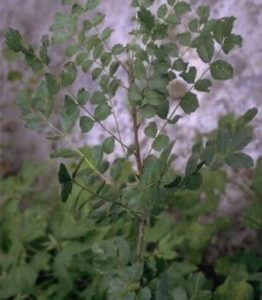 Common Name: Ceylon spinach
Common Name: Ceylon spinach
Description
Talinum fruticosum is an herbaceous perennial plant that is native to Mexico, the Caribbean, Central America, and much of South America. Common names include Ceylon spinach, waterleaf, cariru, Surinam purslane, Philippine spinach, Florida spinach, potherb fameflower, Lagos bologi, and sweetheart. It is widely grown in tropical regions as a leaf vegetable. . . . .Read more
References
Switchboard
Wikipedia
Meet the crops
Colocasia esculenta
 Common Name: Taro
Common Name: Taro
Description
Colocasia esculenta is a tropical plant grown primarily for its edible corms, the root vegetables most commonly known as taro. It is believed to be one of the earliest cultivated plants. Linnaeus originally described two species which are now known as Colocasia esculenta and Colocasia antiquorum of the cultivated plants that are known by many names including eddoes, dasheen, taro, but many later botanists consider them all to be members of a single, very variable species, the correct name for which is Colocasia esculenta . . . .Read more
References
Switchboard
Wikipedia
Telfairia occidentalis
 Common Name: Fluted gourd
Common Name: Fluted gourd
Description
Telfairia occidentalis is a tropical vine grown in West Africa as a leaf vegetable and for its edible seeds. Common names for the plant include fluted gourd, fluted pumpkin, and ugu. T. occidentalis is a member of the Cucurbitaceae family and is indigenous to southern Nigeria. The fluted gourd grows in many nations of West Africa, but is mainly cultivated in Nigeria, used primarily in soups and herbal medicines. Although the fruit is inedible, the seeds produced by the gourd are high in. . . . .Read more
References
Switchboard
Wikipedia
Sclerocarya birrea
 Common Name:Marula
Common Name:Marula
Description
Sclerocarya birrea ssp. caffra is a medium to large tree, usually 9 m tall, but trees up to 18 m have been recorded; it is single stemmed with a dense, spreading crown and deciduous foliage; the bark is grey and usually peels off in flat, round disks, exposing the underlying light yellow tissue; young twigs are thick and digitaliform with spirally arranged composite leaves at their ends; it has a thick, relatively short taproot reaching depths of 2.4 m, lateral roots branch at the upper 60 cm of soil; mycorrhizae (root fungus) are found on the fine roots.
Leaves 18-25 x 8-15 cm, . .…Read more
References
Switchboard
Wikipedia